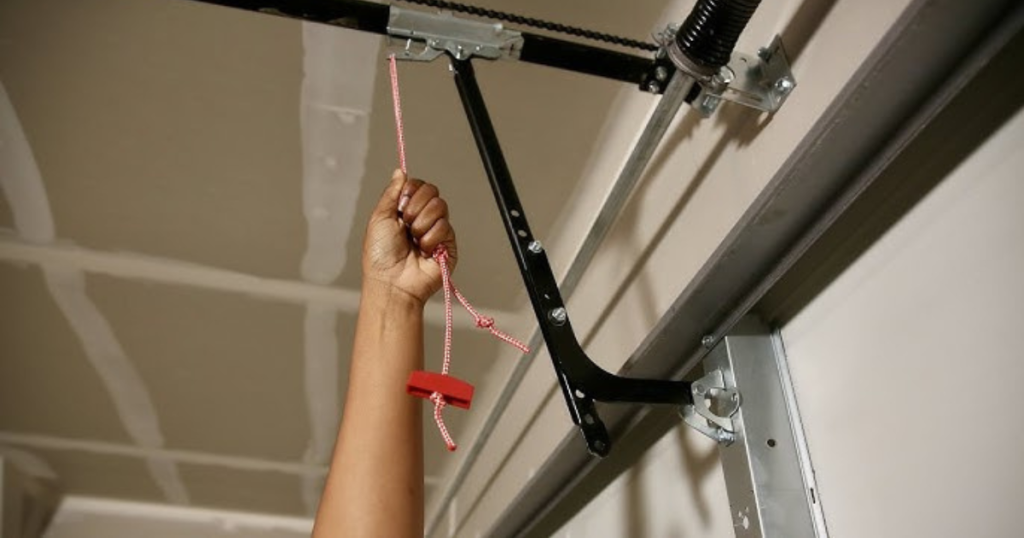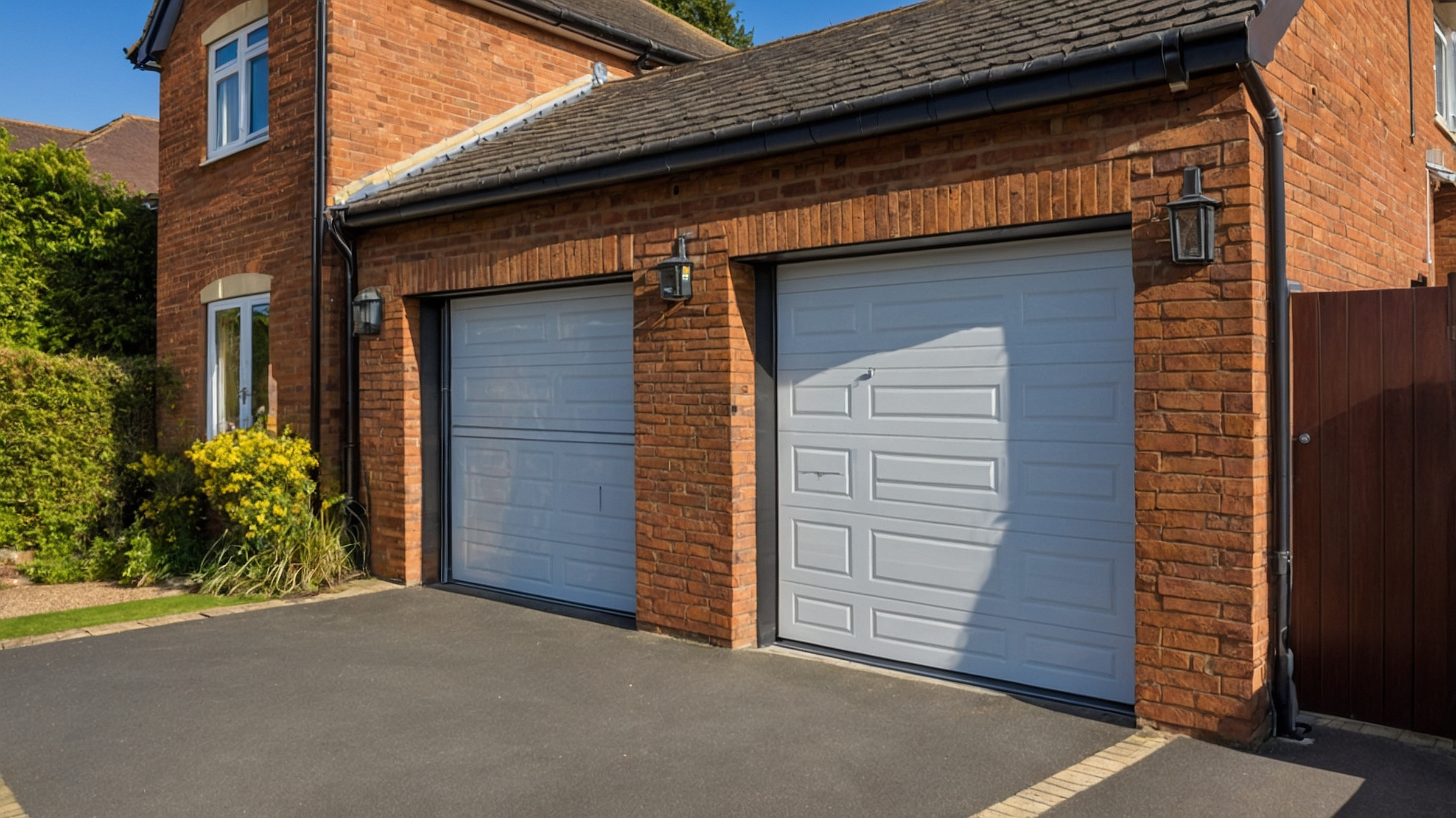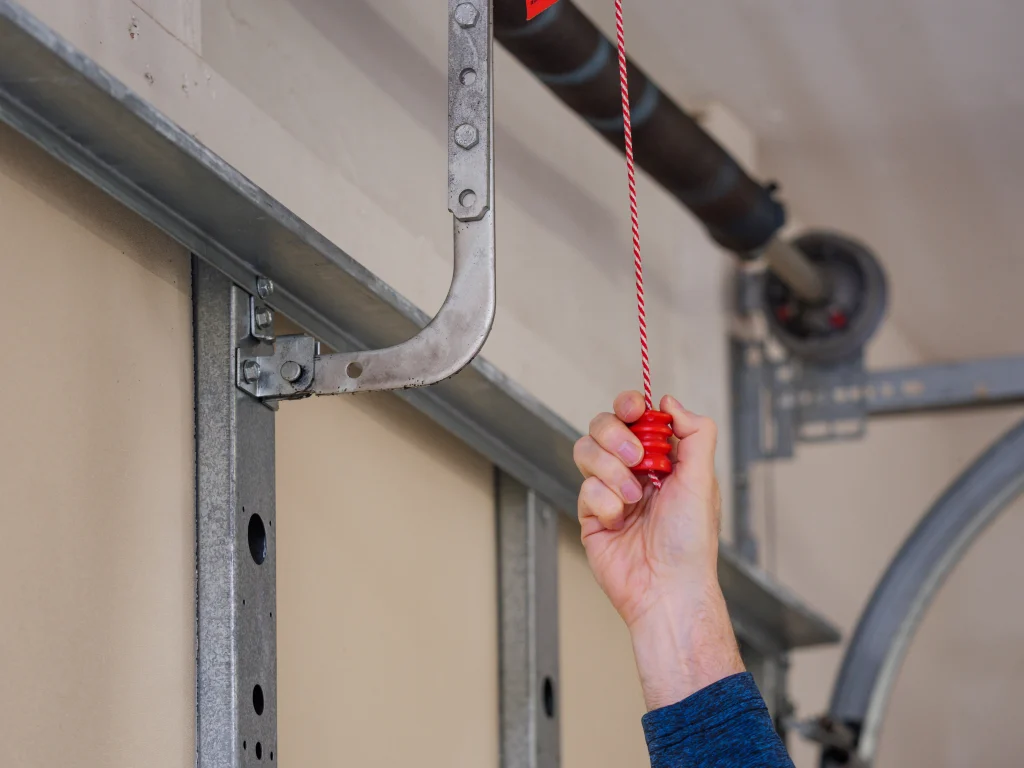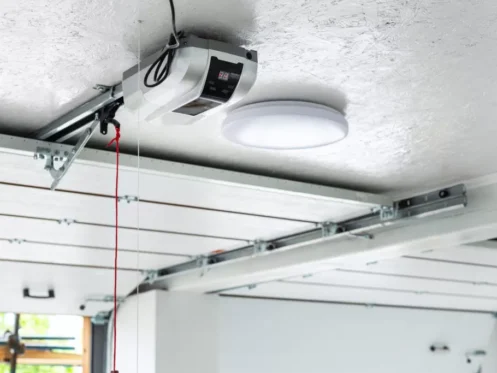If your garage door becomes disengaged from the opener, often due to a power outage or manual operation, you’ll need to reengage it to restore normal function.
This guide will take you through the simple steps to re-engage your garage door, ensuring it operates smoothly again without the need for manual lifting.
How to reengage garage door?
To reengage your garage door, pull the emergency release cord, lift the door manually, then reconnect the opener by pulling the cord back. Ensure everything is aligned before testing.
Key Takeaways
- Reengaging your garage door is an essential step after manual operation or a power outage.
- The process involves using the manual release emergency cord and ensuring the door is properly aligned.
- It’s important to test the door to make sure the opener is functioning correctly after reengagement.
What Does It Mean to Reengage a Garage Door?

Reengaging a garage door refers to the process of reconnecting the door to the automatic opener after it has been manually disconnected.
There are times when your garage door may become disengaged from the opener carriage, often due to a power outage, manual operation, or maintenance.
Reengaging your garage door allows it to resume normal operation with the opener, so you don’t have to lift it manually.
In this guide, we’ll walk you through the steps to easily reengage your garage door and ensure it functions properly again.
This is commonly done using a manual release cord, which disconnects the door from the motor so that it can be operated manually.
Once the issue causing the disengagement is resolved (e.g., power is restored, or the garage door is back on its track), you need to reattach the door to the opener system to restore automatic operation.
Reasons Why You Might Need to Reengage Your Garage Door

There are a variety of reasons why your garage door may become disengaged from the opener, including:
1. Power Outage
When the power goes out, your garage door opener will not be able to function. In these situations, you may need to manually open and close the door.
Once the power is restored, you will need to reengage the door to the opener to resume automatic operation.
2. Manual Operation
If you’ve been manually operating your garage door for maintenance or due to a malfunction, it’s important to reengage the door once the repairs are complete or the issue is resolved.
3. Off-Track Problems
Sometimes, if the door goes off its tracks or encounters another issue, it might become disconnected from the opener. Reengagement is necessary once the problem has been fixed.
How to Reengage Your Garage Door: Step-by-Step Instructions
Here’s how to reengage your garage door after it’s been disconnected from the opener.
1. Lift the Garage Door Manually
If the garage door was operated manually, begin by lifting it to the open position. Be sure to lift the door evenly to prevent strain on one side.
Depending on the size and weight of the door, you may need some assistance to lift it.
Tip: Most garage doors are equipped with torsion springs, which help counteract the door’s weight, making it easier to lift.
However, they can still be heavy, especially for larger doors. Take your time and avoid forcing the door open.
2. Locate the Manual Release Cord
Once the door is open, locate the manual release cord. This is typically a red cord hanging from the center of the opener mechanism.
It connects the door to the trolley that moves along the tracks.
Tip: The manual release cord is often attached to a small lever or hook. Pulling this cord releases the door from the opener, allowing it to be manually operated.
This cord is crucial for reengaging the door.
3. Pull the Manual Release Cord
Pulling the manual release cord will disengage the door from the automatic opener.
The cord is designed to be easily pulled by hand, but make sure you pull it straight down to avoid damaging the mechanism.
Tip: Be careful not to pull the cord too forcefully, as this could break the mechanism. Gentle, steady pulling will do the trick.
4. Reattach the Door to the Opener
Once the door is manually lifted and the manual release cord has been pulled, the next step is to reconnect the door to the opener.
Gently pull the manual release cord towards the opener motor to re-engage the trolley with the chain or belt that powers the door.
Tip: The reengagement may take a few seconds, and you should hear a soft click when the trolley connects back to the motor.
5. Test the Door
After reattaching the door to the opener, it’s time to test the system. Use the wall-mounted control panel or your garage door remote to operate the door.
Press the button to close or open the door and observe its operation. Ensure that the door moves smoothly along the tracks and doesn’t make any unusual noises or struggles.
Tip: If the door doesn’t operate smoothly or makes excessive noise, there could be an underlying issue, such as misalignment, or a problem with the opener motor.
In this case, you may need to call a professional for assistance.
What to Do If the Door Isn’t Reengaging

If you’re having trouble reengaging your garage door, there are a few potential reasons for the issue. Here’s what you can check:
1. Check the Track Alignment
If the door has come off its tracks, you may need to realign it before reengaging. Misaligned tracks can prevent the door from reconnecting properly to the opener system.
Check for any visible gaps or bends in the tracks, and carefully realign them.
2. Examine the Manual Release Cord
The manual release cord itself may be damaged or tangled, preventing reengagement. Inspect the cord for any issues that could prevent it from working properly.
If the cord is damaged, it may need to be replaced.
3. Look for Obstructions
Ensure there are no obstructions or debris in the path of the door. Even small obstacles can prevent the door from aligning properly when reengaged.
Clear any debris, and check that the tracks are free of any blockages.
4. Seek Professional Help
If you are unable to reengage the garage door after attempting the above fixes, it may be time to consult a professional.
They can inspect the opener system, tracks, and other components to ensure everything is functioning properly.
Preventing Future Disengagement Issues
Once you’ve successfully reengaged your garage door, it’s important to take steps to prevent the issue from happening again. Here are some tips for keeping your door operating smoothly:
1. Regularly Inspect and Maintain the Opener
Regular maintenance of your garage door opener and its components will help prevent issues from arising. Scheduling regular garage door repair in Pingree Grove IL ensures that any potential problems are caught early, keeping your system running smoothly.
Check the opener system, tracks, rollers, and cables for wear and tear, and perform routine lubrication on moving parts.
2. Test the Safety Mechanisms
Many modern garage door openers come with safety mechanisms, such as auto-reverse features, to ensure the door operates safely.
Test these features periodically to make sure they work as expected.
3. Keep the Tracks Clean
Dirt and debris can build up on the tracks, affecting the door’s movement. Keep the tracks clean and free from obstructions to ensure smooth operation.
Frequently Asked Questions
1. What should I do if my garage door won’t reengage?
Check for misaligned tracks, issues with the manual release cord, or obstructions in the door’s path. If the problem persists, it’s best to consult a professional for assistance.
2. Can I reengage the garage door myself?
Yes, reengaging a garage door is typically a simple process that can be done manually. Just make sure to follow the correct steps and test the door afterward to ensure it works properly.
3. How do I know if my garage door opener is working properly?
Test the door by using the wall-mounted control panel or remote. If the door opens and closes smoothly without unusual noises, the opener is functioning properly. If not, further inspection may be required.
Conclusion
Reengaging your garage door may seem like a small task, but it’s an essential part of maintaining your garage door system.
By following the correct steps, you can get your door back in working order quickly and easily.
Regular maintenance and proper care of your garage door opener will ensure that you won’t run into these issues in the future.
Whether you handle it yourself or call in a professional, addressing disengagement problems promptly will help keep your garage door functioning smoothly for years to come.

